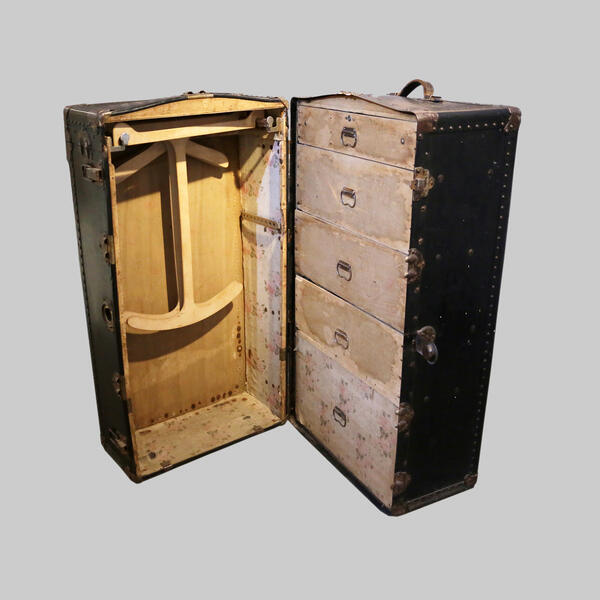In 1892, Chelyabinsk saw an unprecedented boom in the construction, commercial, and industrial sectors, brought about by the completion of the city’s railroad. It was then that the city got its nickname, the “Chicago of Ural.” A city of easy money, rich merchants, and opportunists of all stripes. Naturally, this state of things came at a price. In 1913, a local newspaper wrote about the consequences of such rapid growth in a very negative way. “You could say that Chelyabinsk is special. A gateway between the old Russia and Siberia, it has, by a twist of fate, become home to a significant number of crooks: people without kith or kin, those looking for easy money, thieves, and the riffraff who have failed to find their promised land and have chosen the city as their temporary shelter.”
The 20th Century History Hall has a separate section that covers this episode from Chelyabinsk’s past. One of the exhibits is a travel wardrobe trunk made in the United States in the early 20th century. Back then, it was considered a luxury item with its five drawers, coat hangers, a pants hanger, and other accessories that made the wardrobe trunk more spacious and convenient.
Wardrobe trunks presumably appeared around 1900 and became especially popular in the United States in the period between 1910 and the early 1950s. Such trunks had hangers for jackets, coats, and pants, and drawers for underwear, shoes, and other clothing items.
The trunk from the museum’s collection used to belong to Piet Hein Hofstra, who served in the Ufa-Ural branch of the American Relief Administration in 1921–1922. This organization helped the starving population of Soviet Russia. Hofstra’s duties included inspection trips around the Southern Urals.
Piet Hein Hofstra most probably fought in World War I and participated in the American intervention in the Russian North in 1918–1919. After that, he may have spent some time in Berlin before arriving in Ufa on November 6, 1921. After it changed owners, the trunk was used by Chelyabinsk-based actors to transport theatrical costumes and props.
The 20th Century History Hall has a separate section that covers this episode from Chelyabinsk’s past. One of the exhibits is a travel wardrobe trunk made in the United States in the early 20th century. Back then, it was considered a luxury item with its five drawers, coat hangers, a pants hanger, and other accessories that made the wardrobe trunk more spacious and convenient.
Wardrobe trunks presumably appeared around 1900 and became especially popular in the United States in the period between 1910 and the early 1950s. Such trunks had hangers for jackets, coats, and pants, and drawers for underwear, shoes, and other clothing items.
The trunk from the museum’s collection used to belong to Piet Hein Hofstra, who served in the Ufa-Ural branch of the American Relief Administration in 1921–1922. This organization helped the starving population of Soviet Russia. Hofstra’s duties included inspection trips around the Southern Urals.
Piet Hein Hofstra most probably fought in World War I and participated in the American intervention in the Russian North in 1918–1919. After that, he may have spent some time in Berlin before arriving in Ufa on November 6, 1921. After it changed owners, the trunk was used by Chelyabinsk-based actors to transport theatrical costumes and props.



